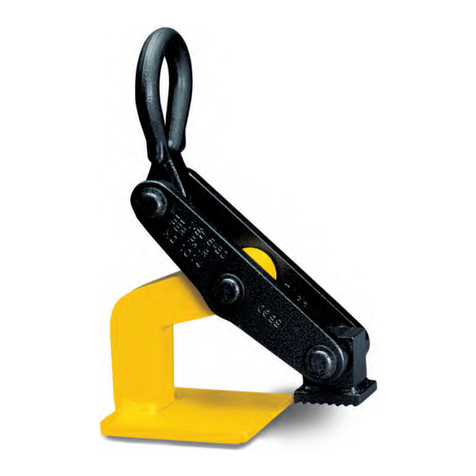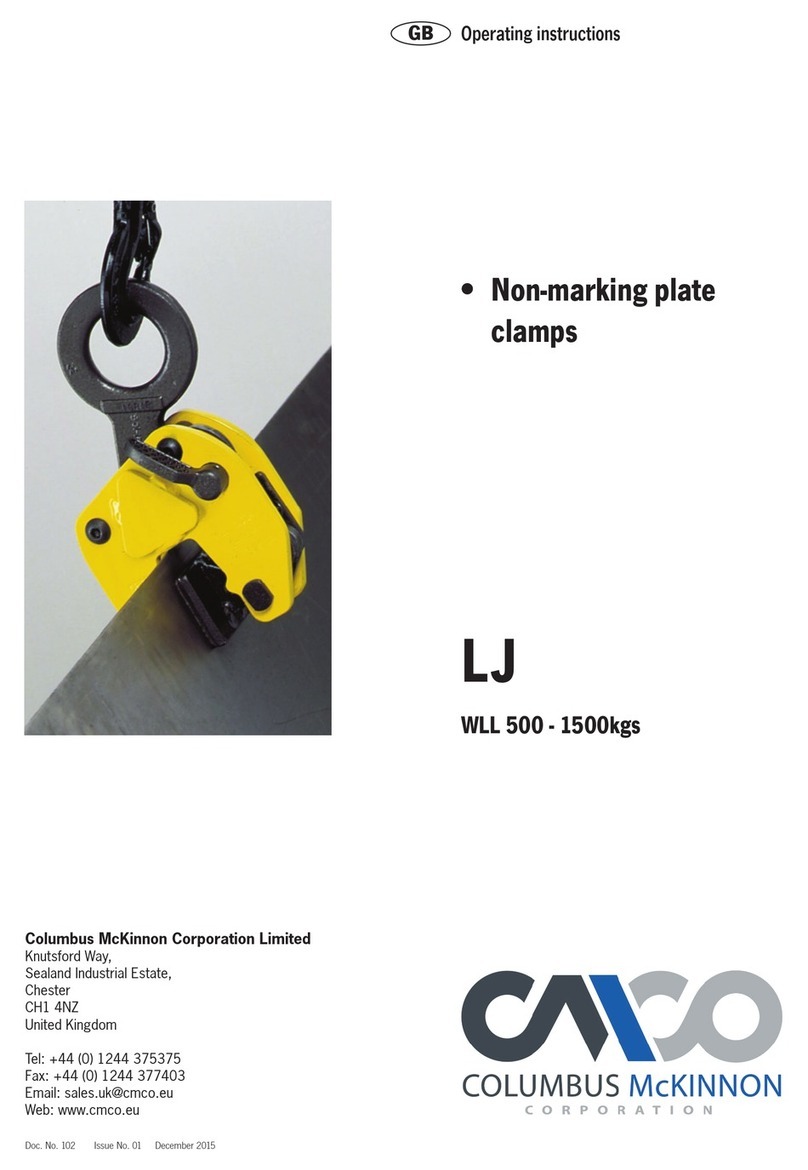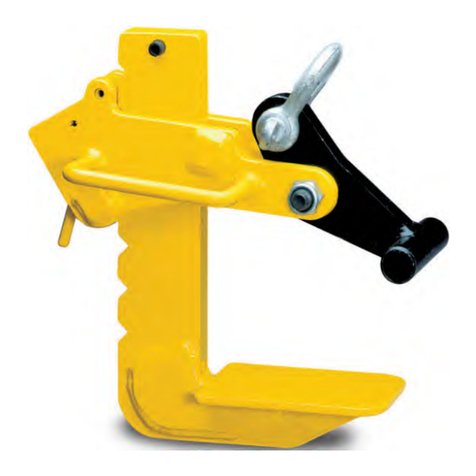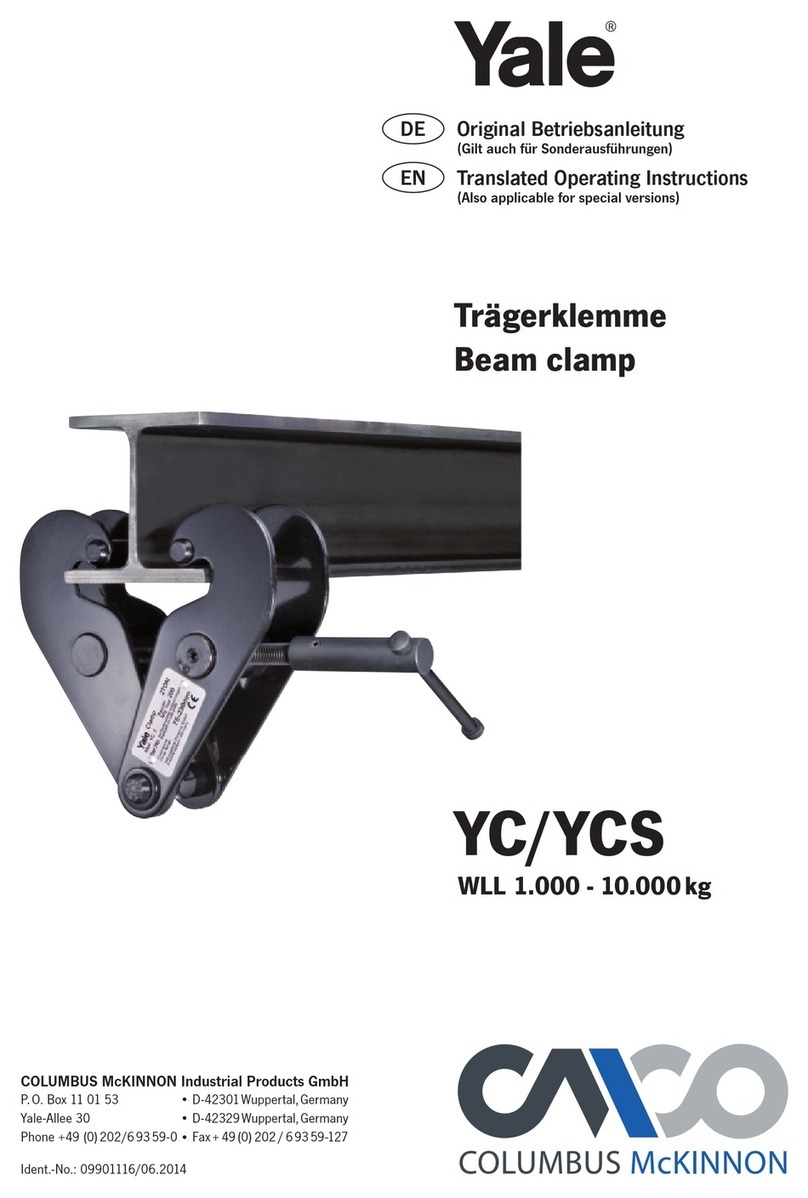
3
© 2016 Columbus McKinnon Industrial Products GmbH
VORWORT
Produkte der CMCO Industrial Products GmbH sind nach dem Stand der Technik und den
anerkannten gültigen Regeln gebaut. Durch unsachgemäße Handhabungen können dennoch
bei der Verwendung der Produkte Gefahren für Leib und Leben des Benutzers oder Dritter
auftreten bzw. Beschädigungen am Hebezeug oder anderen Sachwerten entstehen.
Das Bedienpersonal muss vor Arbeitsbeginn eingewiesen worden sein. Dazu ist die
Betriebsanleitung von jedem Bediener vor der ersten Inbetriebnahme sorgfältig zu lesen.
Diese Betriebsanleitung soll erleichtern, das Produkt kennen zu lernen und die
bestimmungsgemäßen Einsatzmöglichkeiten zu nutzen. Die Betriebsanleitung enthält wichtige
Hinweise, um das Produkt sicher, sachgerecht und wirtschaftlich zu betreiben. Ihre Beachtung
hilft Gefahren zu vermeiden, Reparaturkosten und Ausfallzeiten zu vermindern und die
Zuverlässigkeit und Lebensdauer des Produktes zu erhöhen. Die Betriebsanleitung muss
ständig am Einsatzort des Produktes verfügbar sein. Neben der Betriebsanleitung und den im
Verwenderland und an der Einsatzstelle geltenden verbindlichen Regelungen zur
Unfallverhütungsvorschrift sind auch die anerkannten Regeln für sicherheits- und
fachgerechtes Arbeiten zu beachten.
Das Personal für Bedienung, Wartung oder Reparatur des Produktes muss die Anweisungen
in dieser Betriebsanleitung lesen, verstehen und befolgen.
Die beschriebenen Schutzmaßnahmen führen nur dann zu der erforderlichen Sicherheit, wenn
das Produkt bestimmungsgemäß betrieben und entsprechend den Hinweisen installiert bzw.
gewartet wird. Der Betreiber ist verpflichtet, einen sicheren und gefahrlosen Betrieb zu
gewährleisten.
BESTIMMUNGSGEMÄSSE VERWENDUNG
Das Lastaufnahmemittel dient dem Heben, Wenden und Ziehen von Blechen, Profilen,
Trägern und Stahlkonstruktionen. Es ist ein bewährtes Hilfsmittel bei Spann-, Richt und
Zugarbeiten. Dabei ist auf den Greifbereich zu achten (Tab. 1).
Eine andere oder darüber hinausgehende Benutzung gilt als nicht bestimmungsgemäß. Für
hieraus resultierende Schäden haftet die Firma Columbus McKinnon Industrial Products
GmbH nicht. Das Risiko trägt allein der Anwender/Betreiber.
Das Lastaufnahmemittel ist für alle Hebegüter aus Stahl und anderen Materialien geeignet,
auf die es sich bis zum Maulanschlag aufschieben lässt, die den über die Hebeklemme
eingeleiteten Kräften standhalten und deren Oberflächenhärte HRC 50 nicht überschreitet. Die
Gewindespindel ist dabei handfest anzuziehen.
Die Verbindung zwischen dem Lastaufnahme- und dem Tragmittel muss mit einem Schäkel
oder einem Ösenhaken hergestellt werden.
Die auf dem Gerät angegebene Tragfähigkeit (WLL) ist die maximale Last, die angeschlagen
werden darf.
Der Aufenthalt unter einer angehobenen Last ist verboten.
Lasten nicht über längere Zeit oder unbeaufsichtigt in angehobenem oder gespanntem
Zustand belassen.
Der Bediener darf eine Lastbewegung erst dann einleiten, wenn er sich davon überzeugt hat,
dass die Last richtig angeschlagen ist und sich keine Personen im Gefahrenbereich aufhalten.
Beim Einhängen des Lastaufnahmemittels ist vom Bediener darauf zu achten, dass das
Lastaufnahmemittel so bedient werden kann, dass der Bediener weder durch das Gerät selbst
noch durch das Tragmittel oder die Last gefährdet wird.
Vor dem Einsatz des Lastaufnahmemittels in besonderen Atmosphären (hohe Feuchtigkeit,
salzig, ätzend, basisch) oder der Handhabung gefährlicher Güter (z.B. feuerflüssige Massen,
radioaktive Materialien) ist mit dem Hersteller Rücksprache zu halten.
Das Lastaufnahmemittel kann in einer Umgebungstemperatur zwischen –40 °C und +100 °C
eingesetzt werden. Bei Extrembedingungen muss mit dem Hersteller Rücksprache genommen
werden.

































